The Best Fantasy Movies of the ’80s, Ranked
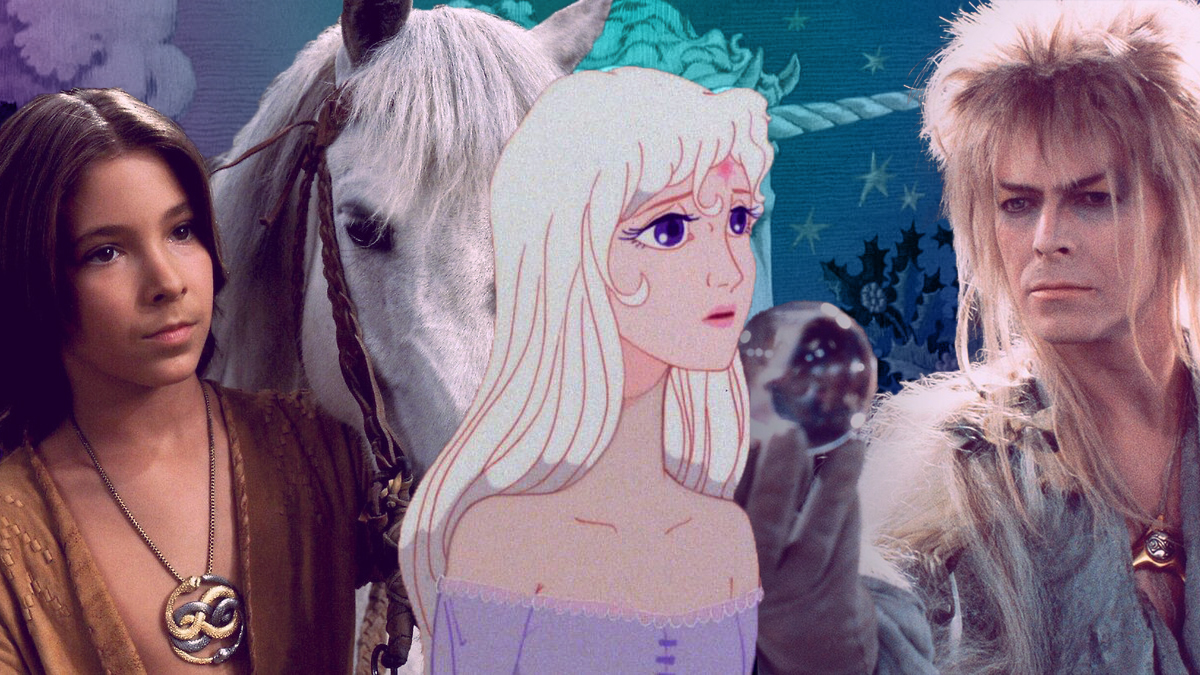
There was more going on in the movies of the 1980s than anamorphic lens flare, analog synthesizer soundtracks, and lip gloss. It can be easy to romanticize the pre-internet era, especially in our current era of overwhelm, but the reality is that the ’80s were a decade when conservatism and capitalism were at all-time highs in the U.S. Other plot points of the American ’80s story include the start of the HIV/AIDS epidemic, the development of synthetic opioid drugs, the introduction of crack cocaine, the Satanic Panic, and the anti-communist sentiment that fueled the Cold War. It was a decade when fear of nuclear war was an everyday topic of discussion, and jangly pop hits had titles like “It’s the End of the World as We Know It (And I Feel Fine).”
Audiences needed an escape from the reality of the ’80s and, inspired by both the growing popularity of Dungeons & Dragons and the unrivaled success of Star Wars, filmmakers opened enchanting new portals to unreal worlds. Fantasy and science fiction enjoyed a full-blown cinematic renaissance. Here are 15 of the best fantasy films from the ’80s.
15. Krull (1983)
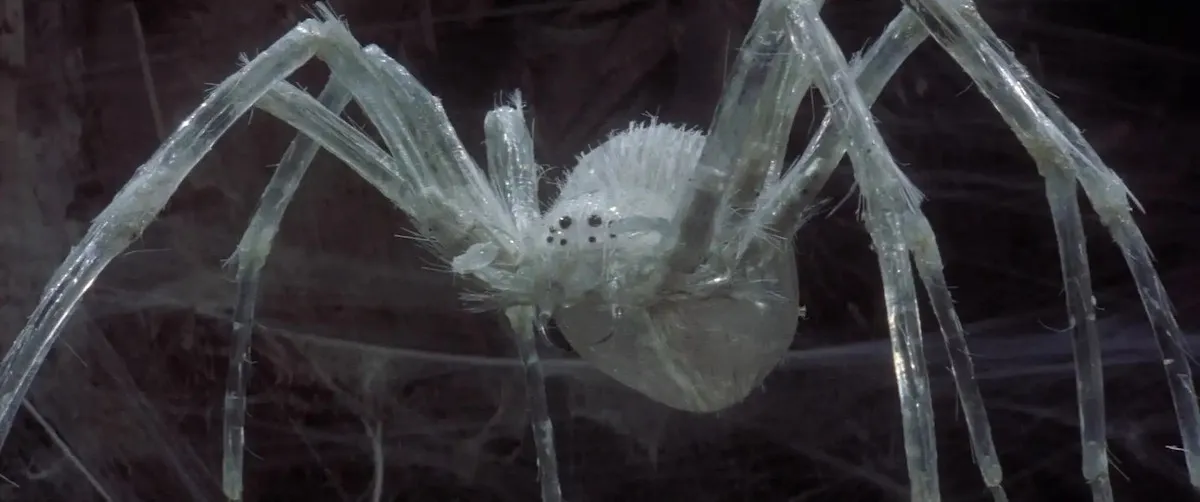
Krull is a sci-fi fantasy swashbuckler so obviously inspired by the success of Star Wars that more than one scene is a shot-for-shot homage to either A New Hope or The Empire Strikes Back (the only Star Wars movies released at the time). Written by Stanford Sherman and directed by Peter Yates, the story follows Prince Colwyn and a predictably Tolkien-like fellowship of warriors on a quest to rescue Colwyn’s bride Princess Lyssa from a fortress of alien invaders who are aesthetically equal parts Stormtroopers, Cylons (from the original Battlestar Galactica series), and Maximilian, the floating murderbot from The Black Hole.
The charm of Krull is not its originality, but rather the way its adventure narrative rolls and bangs like a pinball machine come to life. Among its predictably all-white, mostly British cast are Liam Neeson (16 years before he played Qui-Gon Jinn), Robbie Coltrane (18 years before he played Rubeus Hagrid), and Francesca Annis from David Lynch’s adaptation of Dune as a giant, scene-stealing spider woman.
A co-production of the UK and the U.S., Krull was an unequivocal box office bomb, but attained cult film status almost immediately upon release, which is enough for it to earn its place among the best ’80s fantasy films.
14. The Black Cauldron (1985)
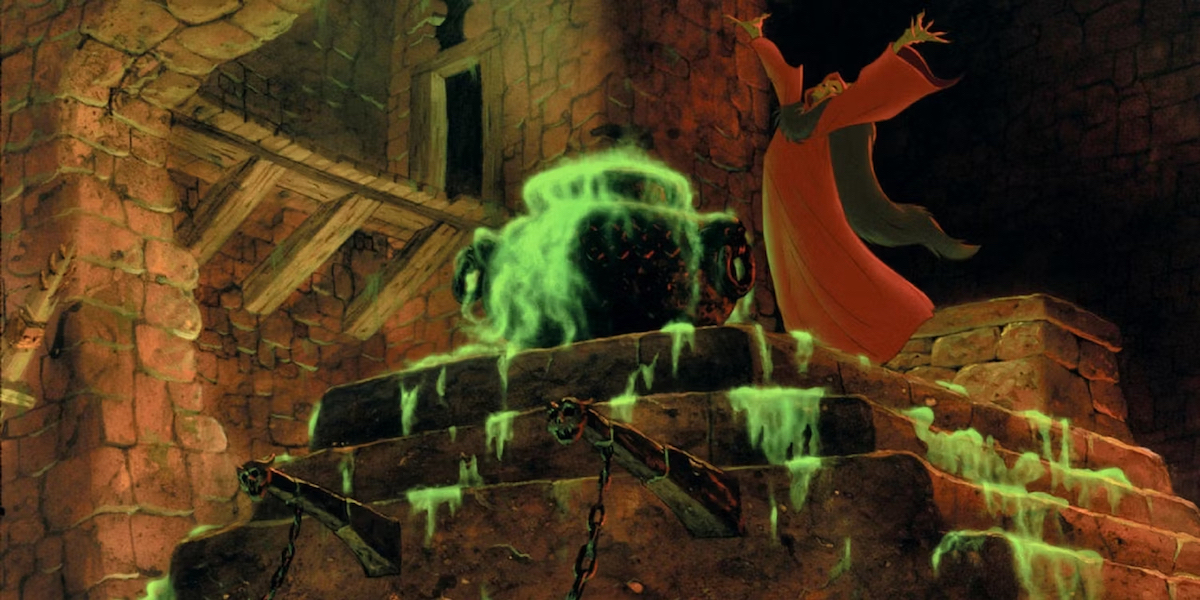
The Black Cauldron might be a legendary mess, but it does hold a place in animation history. The first film released by Walt Disney Studios to receive a PG rating, it also features the first computer generated images in an animated Disney film. Even still, the documentary Waking Sleeping Beauty reveals that “The Black Cauldron cost $44 million to make and made less than half that at the box office.”
A loose adaptation of the fantasy pentalogy The Chronicles of Prydain by Lloyd Alexander, which was itself based on Welsh folklore, the plot follows a boy named Taran on a quest far from home to dethrone an emperor who wants to use the cauldron to conquer the world. Other characters include a psychic pig named Hen Wen and an army of the dead called the Cauldron Born.
Alas, its well-documented production problems are evident onscreen, from the disjointed narrative to the sometimes sloppy animation sequences. Disney had not experienced this level of critical and commercial failure since Sleeping Beauty in 1959, and would not experience it again until Treasure Planet in 2002 and, most recently, Strange World in 2022. Even still, nothing can diminish the nostalgia factor of The Black Cauldron.
13. Willow (1988)
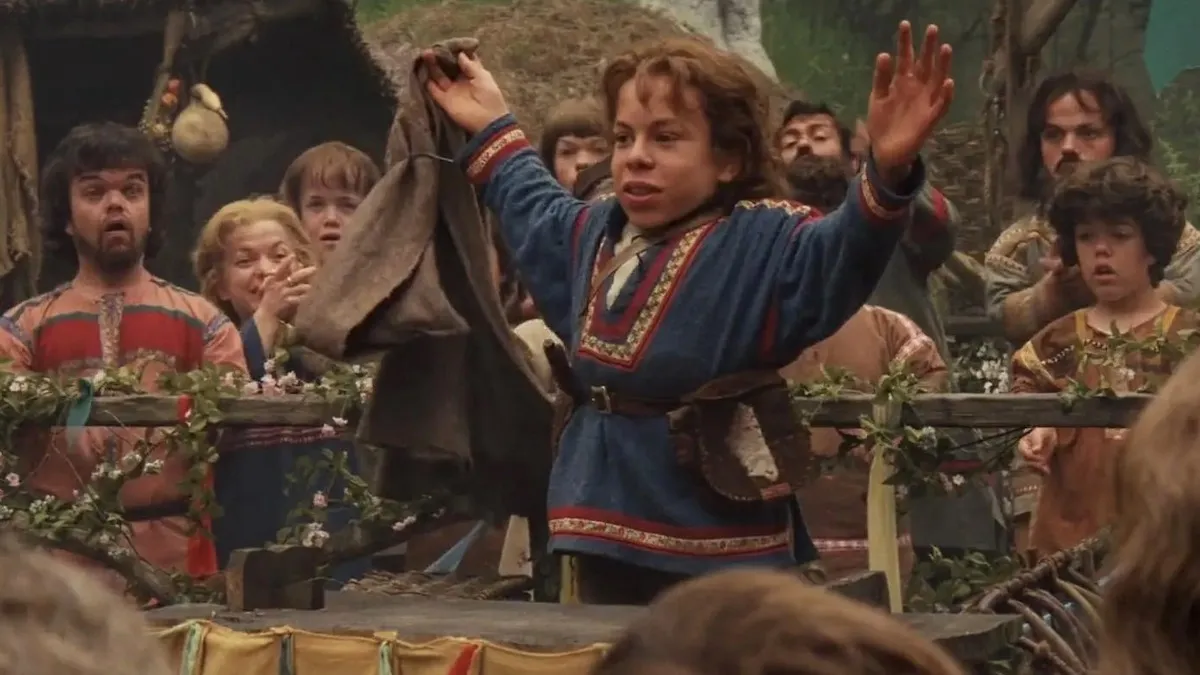
George Lucas conceived of a high fantasy about the adventures of an aspiring magician all the way back in 1972, but it was not until 1988—when the family-friendly fantasy trend was on a downward arc—that it was finally realized. Written by Bob Dolman, directed by Ron Howard, and executive produced by Lucas, Willow tells a story with strong folkloric vibes about a sorcerer-in-training who bands together with two brownies (household spirits, not Girl Scouts) and a wandering warrior to save a baby from an evil queen.
Warwick Davis’s role as the titular character was his fourth film performance, but the first time he ever appeared on screen without full body and face coverage (as in Return of the Jedi and two made-for-television Ewoks films) or prosthetic makeup (as in Labyrinth). Willow showcases Val Kilmer’s physical charms almost as much as Davis’s acting skills. It also stars Joanne Whalley, who met Kilmer on the set and married him soon after the production, as well as Jean Marsh, who gave a similar performance as Mombi in Return to Oz three years earlier.
Filmed in the gorgeous Dinorwic quarry in Wales and at Elstree Studios in Hertfordshire with additional photography in New Zealand, the setting of Willow is organically magical. The visual effects by ILM were groundbreaking in their time for introducing digital morphing technology. And while the narrative might not be as inventive as other ’80s fantasies, the chemistry between Davis and Kilmer make it truly memorable.
12. Legend (1985)
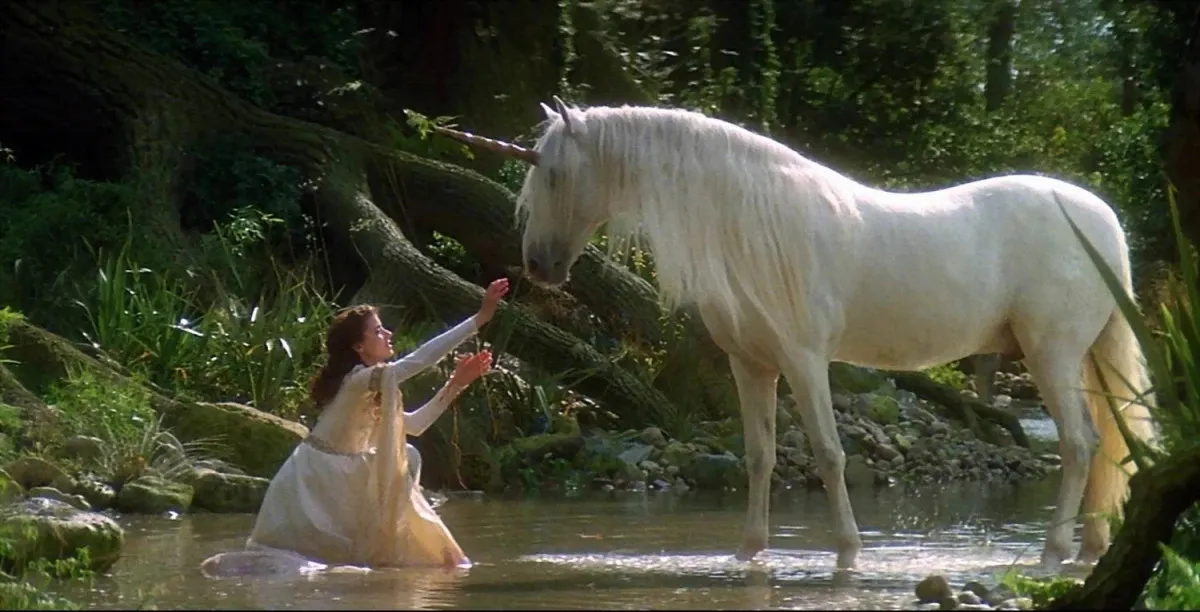
The story of Legend could be fit into the pages of a picture book: A pure being must stop the Lord of Darkness from enshrouding the world in never-ending nighttime. But like the best picture books, the visual design leaves its deceptively simple ideas open to interpretation. Directed by Ridley Scott, Legend is an incomparable vibes-forward cinematic experience. Its lush set design, flawless prosthetic make-up effects, and meticulous lighting and cinematography create a dreamlike atmosphere in every scene.
Legend was neither critically nor commercially successful when it was released, but it received awards nominations for its costume design, makeup design, and visual effects, and won an award for its cinematography. Positive critique usually centers the performances of Tom Cruise as Jack O’ the Green, a green man (and aforementioned “pure being”), and Tim Curry as the Lord of Darkness, whose character design looks like the Baroque ancestor of Guillermo del Toro’s Hellboy, and whose performance is as iconic as Dr. Frank-N-Furter in The Rocky Horror Picture Show.
The director’s cut released in 2002 restores the original 113-minute version Scott had originally intended, which makes more narrative sense than the original 90-minute theatrical version. Both versions have the rare, precious power to take the viewer away to a place even farther from present-day reality than the mid-’80s. Legend is legendary because it makes its fantasy setting so tactile.
11. Ladyhawke (1985)
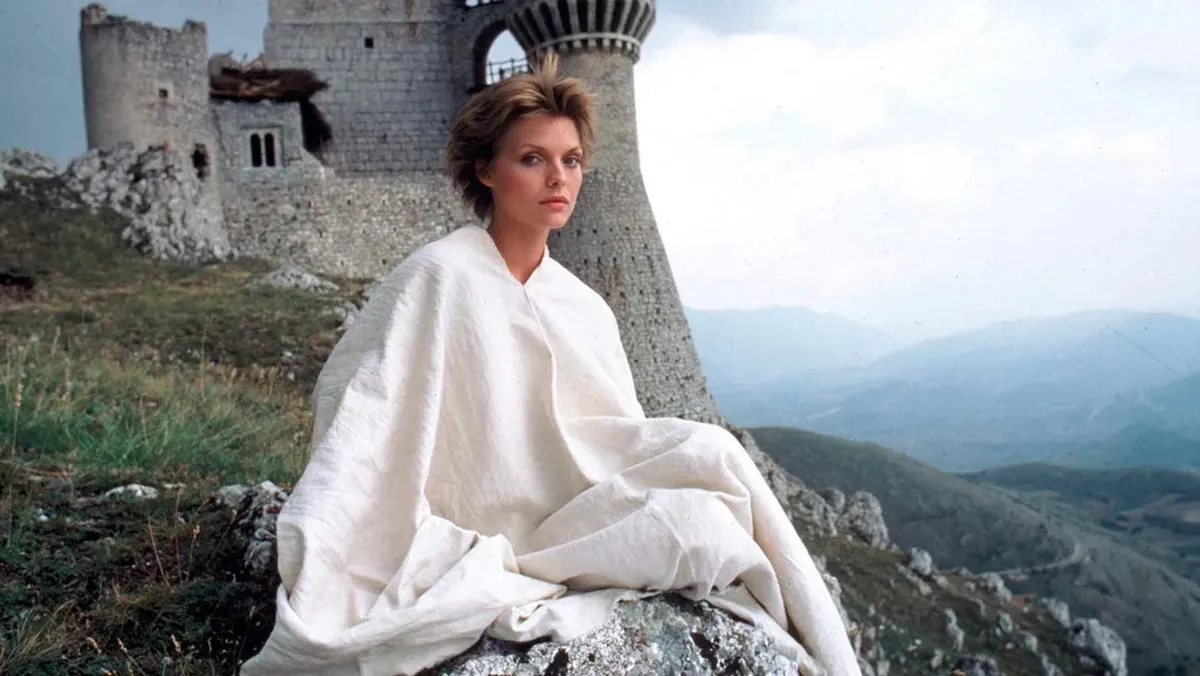
Richard Donner directed two films released in 1985: the first was the adventure comedy The Goonies; the second, released only two months later, was the elegant romance-fantasy Ladyhawke. Set in medieval France, a thief named Phillipe the Mouse (a pre-Ferris Bueller Matthew Broderick) accidentally encounters the former Captain of the Guard of Aquila, named Etienne (Rutger Hauer), and his lover Isabeau of Anjou (Michelle Pfeiffer). Both are being hunted by a defrocked Bishop (John Wood) who cast a spell on them that turns Etienne into a wolf every night and Isabeau into a hawk during daylight. Phillipe the Mouse is their only hope of breaking the spell. The folkloric plot is genuinely enchanting, although the runtime sometimes feels longer than two hours. Ladyhawke is uniquely beautiful in the way its lighting design directly supports the narrative (the diffuse light is similar when Etienne transforms and when Isabeau transforms).
While The Goonies has since been selected for preservation in the United States National Film Registry by the Library of Congress for its cultural significance, Ladyhawke remains the lesser-known film. But its captivating performances and lush photography make it an absolute classic of its genre.
10. The Last Unicorn (1982)
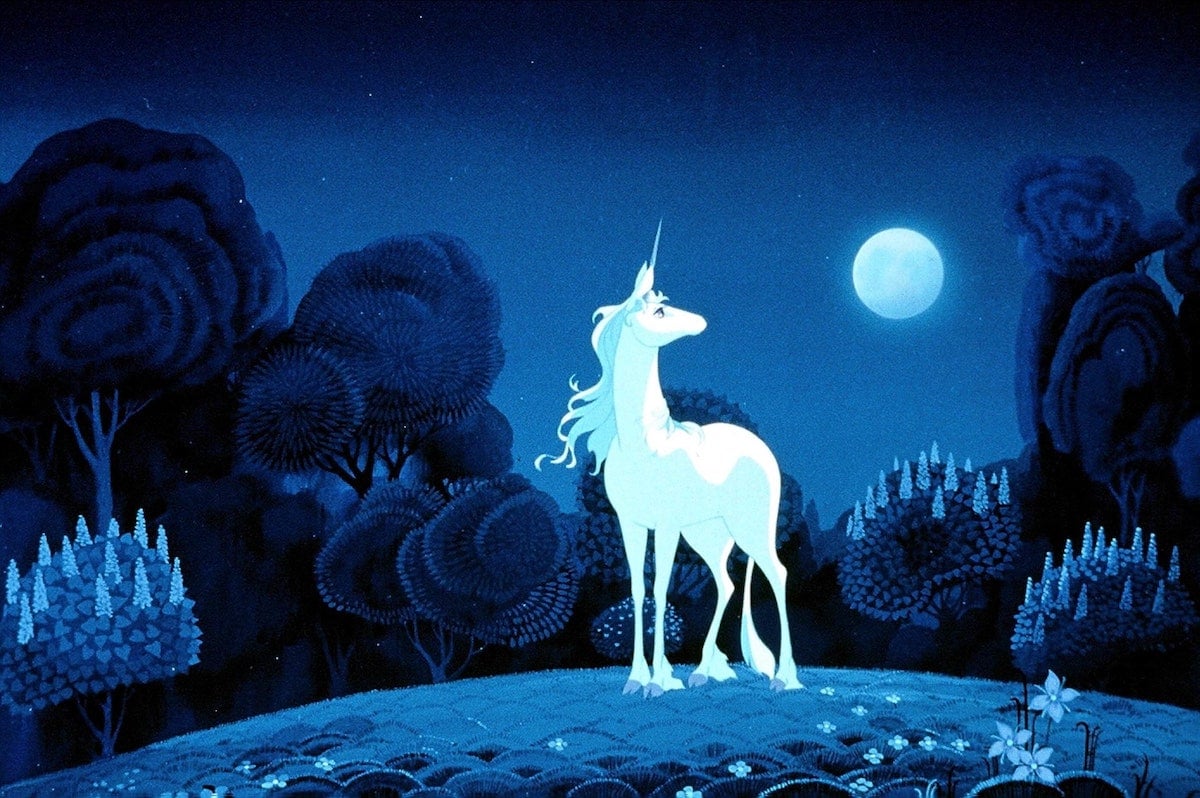
Based on a novel by Peter S. Beagle, this animated film tells the story of a unicorn who learns—by way of a butterfly who speaks in riddles—that she is indeed the last of her species, and begins a quest to find out what happened to her kin. Beagle wrote the screenplay for this adaptation, which elevates it to the upper echelons of all-ages fantasy films based on books.
The gentle awe that informs The Last Unicorn is rare in 21st century children’s films. Supported by the voice acting of Mia Farrow, Alan Arkin, Jeff Bridges, Angela Lansbury, and Christopher Lee, and set to the unambiguously ’80s sounds of the folk rock band America (with the London Symphony Orchestra), this film is a gem unique to its era.
The Last Unicorn was directed and produced by Arthur Rankin Jr. and Jules Bass, but looks cleaner and more fluid than other Rankin/Bass productions like ‘Twas the Night Before Christmas and The Hobbit because the animation was done at Topcraft in Tokyo. Soon after this production, Topcraft was hired by Hayao Miyazaki to animate Nausicaä of the Valley of the Wind, and many of its animators became founding members of Studio Ghibli.
9. Time Bandits (1981)
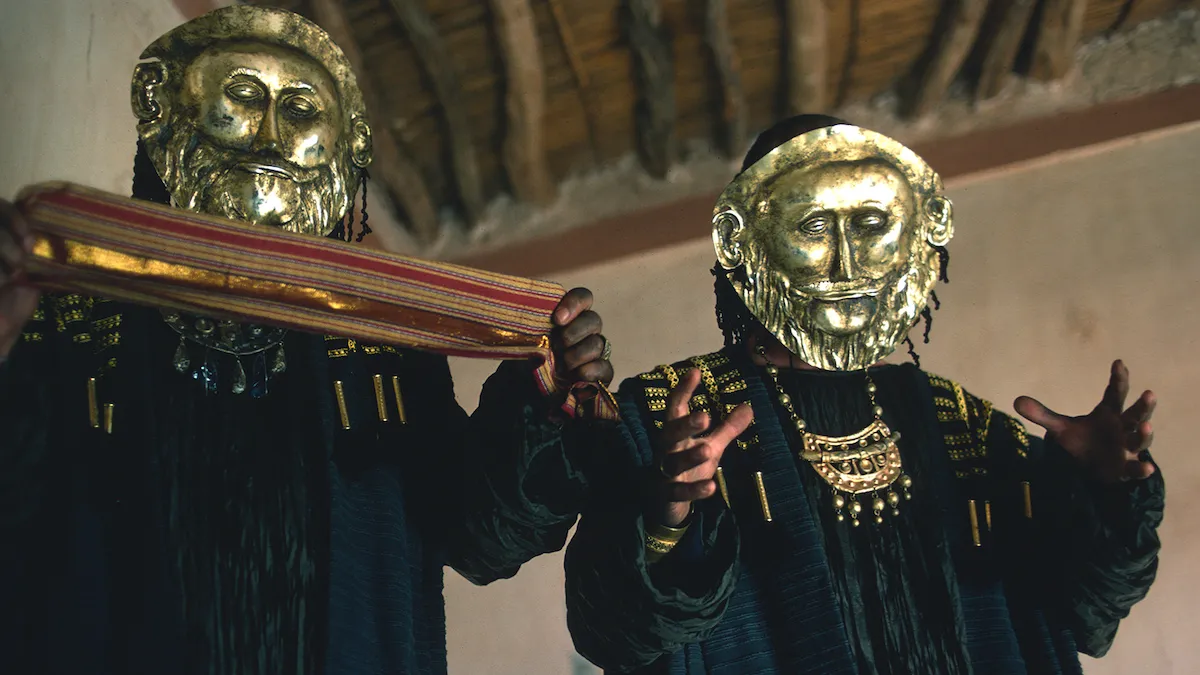
This fantasy co-written, directed, and produced by Terry Gilliam (with a little help from ex-Beatle George Harrison, whose HandMade Films financed it) is a part of Gilliam’s unofficial Dreamer Trilogy, which includes his next two films, Brazil and The Adventures of Baron Munchausen. Time Bandits is a hyper-imaginative and occasionally unhinged story about a boy who accidentally joins a band of time traveling dwarves as they jump from era to era looking for treasure to steal. The casting of little people—one of whom is Kenny Baker, who had recently become famous for his performance as R2-D2 in Star Wars—is the only significant point of diversity in the cast. Wonderful though they may be in their roles, the cast is almost exclusively white: Craig Warnock is joined by Sean Connery, John Cleese, Shelley Duvall, Ian Holm, and Michael Palin. Perhaps most memorable among the cast is Evil Genius, played by David Warner, who went on to play the computer program that appeared as a giant head in the original TRON and Caledon Hockley’s minion Spicer Lovejoy in Titanic. The production design is dense with textures and the giddy sense of adventure is contagious. But where Time Bandits really succeeds is the way it focalizes a child’s point-of-view.
8. The Secret of NIMH (1982)

The first feature film directed by Don Bluth, The Secret of NIMH is an animated adaptation of the novel Mrs. Frisby and the Rats of NIMH by Robert C. O’Brien. Bluth went on to direct more commercially successful films like An American Tail, The Land Before Time, and All Dogs Go to Heaven. The Secret of NIMH has more in common with later Bluth films like Anastasia and Titan A.E. because it has an emotional intelligence that other animated films of the decade lack. While other children’s movies of the time were preoccupied with selling toys—and in some instances were based on toys and produced in order to sell even more toys—The Secret of NIMH matches its visual dazzle with startling maturity.
A widowed field mouse named Mrs. Brisby (voiced by Elizabeth Hartman) plans to move her family away from their home on a farm before the plows come, but before she can do so, her son Timothy (voiced by Ina Fried, who was credited as Ian Fried before she came out as transgender) becomes dangerously ill. Mrs. Brisby seeks the support of rats who were subjects in human medical testing that enhanced their intelligence, and discovers a magical link between their species.
The hand-drawn animation and hand-painted backgrounds are made even more mesmerizing by a gorgeous use of light and shadow and a captivating soundtrack. The Secret of NIMH is not only one of the best fantasy films of the ’80s, but also one of the best animated films of all time.
7. Excalibur (1981)
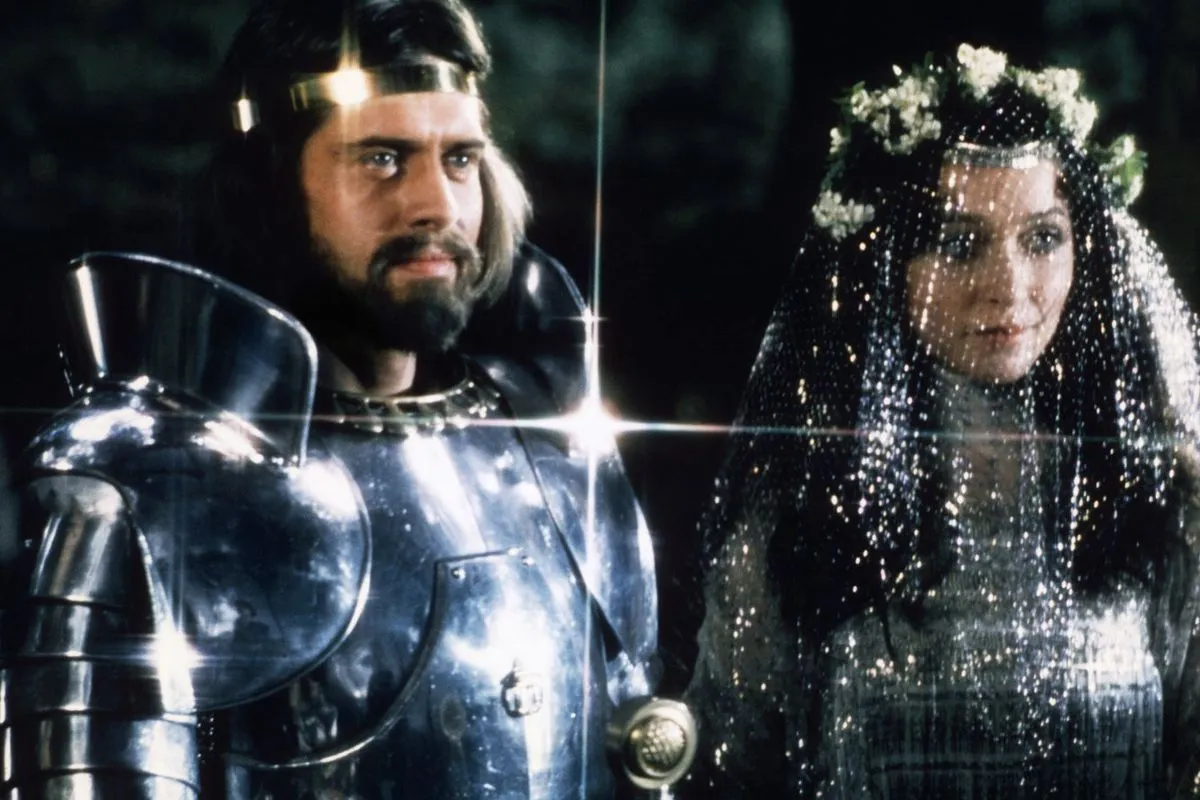
Of all the films that reimagine the legend of King Arthur and the knights of the Round Table, Excalibur is by far the best. Even after more than four decades, this version co-written, directed, and produced by John Boorman is still the most phantasmagoric, the most hypnotic, and the most ornate. Gorgeous cinematography captures radiant performances from a cast including Helen Mirren, Gabriel Byrne, Patrick Stewart, and Liam Neeson in early roles. Nigel Terry as Arthur and Nicol Williamson as Merlin embody their characters in an especially visceral way.
Excalibur presents an interpretation of Arthurian legend that puts its villainous characters into sharper focus than its heroic ones, presaging such characterizations as Cersei Lannister and Marvel’s Loki. Brazen sexuality and voluminous blood make Excalibur the least family friendly film on this particular list. But as a fantasy produced with a glistening, twinkling visual style that could only have been possible in the early ’80s, this adaptation is a dream. Or, to quote Merlin in a classic moment: “A dream to some … A nightmare to others.”
6. The Company of Wolves (1984)
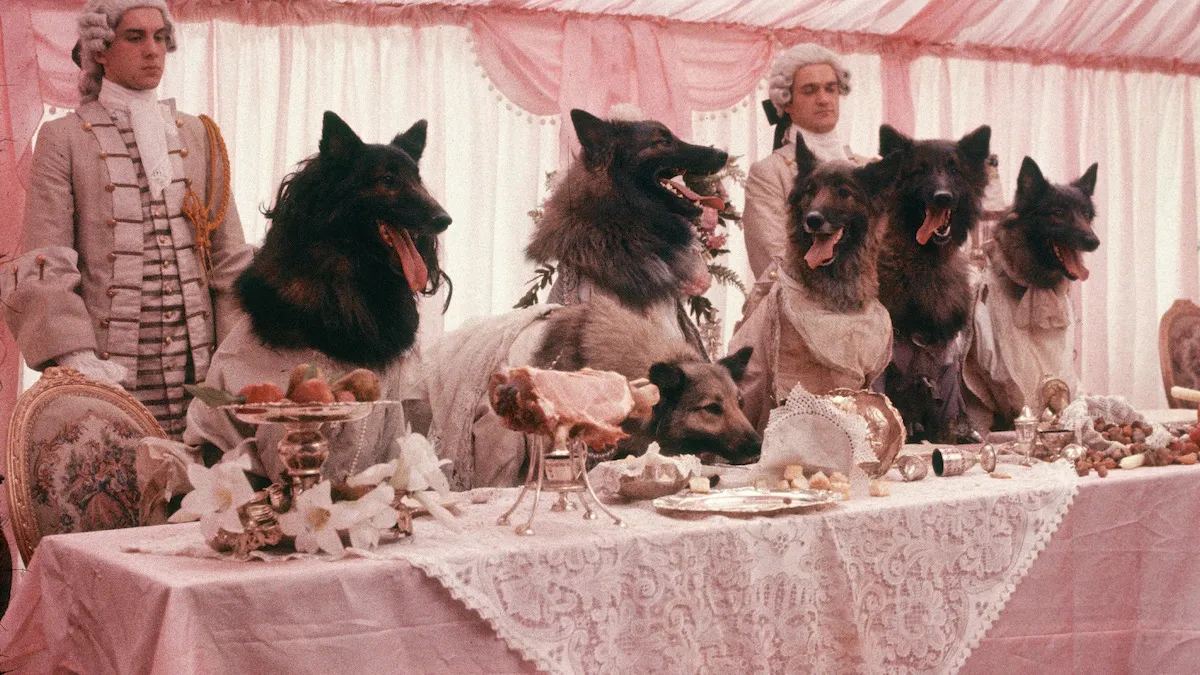
Rather than a book that comes to life (like The NeverEnding Story) or a tale told by a literal narrator (like The Princess Bride), the framing device in The Company of Wolves is the dreamscape of a girl named Rosaleen (Sarah Patterson). The film has an anthology-like quality as each dream takes Rosaleen on another unsteady journey through a dark forest to find her grandmother (Angela Lansbury). Each sequence adds another facet to this gem of a fantasy, incorporating gothic romance, supernatural horror, and surrealism to the reimagined folktale. Practical effects—including copious blood spatter and live wolves outfitted in nightgowns—make this one of the most visually distinctive entries in director Neil Jordan’s entire filmography. Despite its low budget, scenes like a decapitated wolf head falling into a vat of milk and bobbing up as a man’s face are nightmarishly effective. The Company of Wolves returns the “Little Red Riding Hood” fairy tale to its gruesome, cautionary roots, and saturates its story with psychosexual symbolism.
5. The Princess Bride (1987)
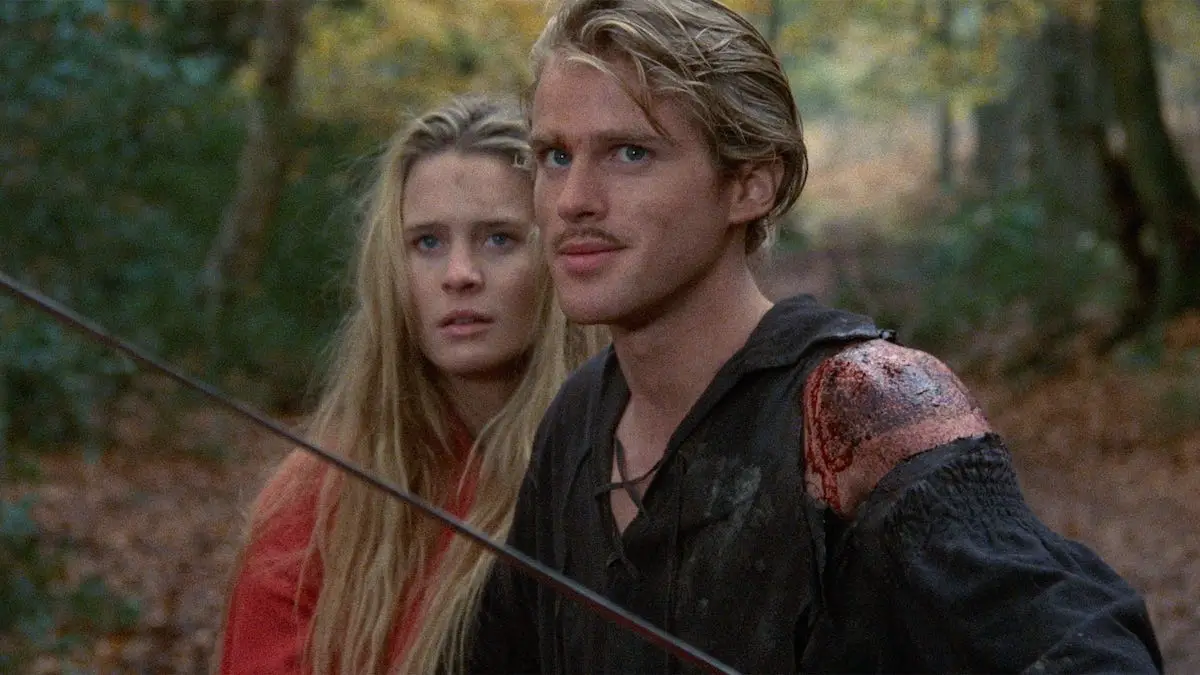
The Princess Bride is a swashbuckler-style adventure story and a satirical comedy with strong thematic elements of romance. The screenplay was adapted by William Goldman from his own novel The Princess Bride: S. Morgenstern’s Classic Tale of True Love and High Adventure, The “Good Parts” Version. At its heart, this a story about the power of storytelling, and as such, it’s as metafictional as The NeverEnding Story or Labyrinth. The most conspicuous difference between this and other fantasies from the ’80s is a self-awareness that borders on postmodern at points. The suspension of disbelief usually required by fantasy is presented here with an affectionate wink. It would probably take an entire terabyte of data to detail the tropes this story so knowingly incorporates, yet somehow it still manages to feel refreshing.
The cast is flawless: Peter Falk as the grandpa (and narrator), Fred Savage as the bedridden grandson, Robin Wright as Buttercup, Cary Elwes (first as Westley, then as the Dread Pirate Roberts, and also as The Man in Black), scene-stealing Wallace Shawn as an inconceivable Sicilian, and André the Giant being absolutely one-of-a-kind. Even brief appearances by Billy Crystal as Miracle Max and Carol Kane as his wife Valerie are memorable.
It might not spirit you away to unknown worlds in quite the same way as other fantasy films, but its cozy visual design, highly quotable dialogue, and infectious love of storytelling earn The Princess Bride its place as one of the best fantasy films of the ’80s.
4. Return to Oz (1985)

Return to Oz was another controversially dark fantasy released by Walt Disney Pictures in the ’80s (see also: The Black Cauldron). Starring Fairuza Balk in her screen debut as Dorothy Gale, alongside actors Nicol Williamson, Jean Marsh, and Piper Laurie, it was criticized as being too grim for family viewing. Based on The Marvelous Land of Oz and Ozma of Oz by L. Frank Baum, Return to Oz was presented as an unofficial sequel to the cherished MGM film from 1939. The many conspicuous differences between this film and the Technicolor musical starring Judy Garland help explain why critics and audiences had such a negative reaction. Indeed, Return to Oz is to The Wizard of Oz what The Dark Knight is to the 1960s Batman television series.
Dorothy escapes a mental asylum and returns to the Land of Oz to find it has been reduced to rubble. She is stalked by Wheelers, humanoid beings with wheels for hands and feet who recall the Droogs from A Clockwork Orange more than anything from a family film. Dorothy soon meets a witch who changes her head to suit her moods, and the claymation Nome King who becomes more menacing with every line of dialogue. Dorothy struggles to restore Oz with help from a hen named Billina, a wind-up man named Tik-Tok, a pumpkinhead man named Jack, an animated piece of furniture named Gump, and Princess Ozma herself. But there is no singing and dancing along the way.
Majestically bizarre and highly rewatchable, Return to Oz earned less than half its budget at the box office, but eventually developed a dedicated following for being so faithful to its source material.
3. The NeverEnding Story (1984)
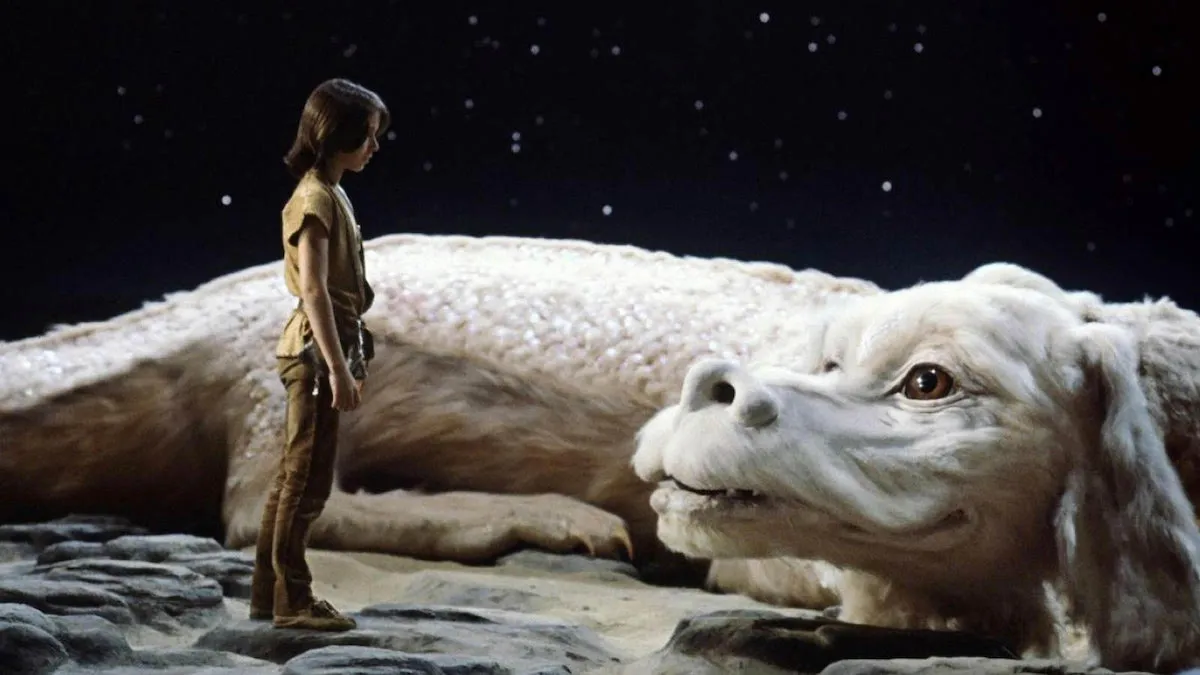
The NeverEnding Story is the first English-language feature by German filmmaker Wolfgang Petersen, adapted from the novel of the same name by Michael Ende. In a narrative framing device not unlike The Princess Bride (but without the satire), a boy named Bastian finds a magical book that tells the story of a young warrior named Atreyu who is tasked with preventing a force called the Nothing from devouring the world of Fantasia.
The NeverEnding Story presents a fantasy world with folkloric settings (the Swamps of Sadness, the Sea of Possibilities), populated by characters like the Chinese-inspired luck dragon Falkor, and the Scheherazade-ish Childlike Empress. It is a story about the magical powers of stories themselves.
In 1984, The NeverEnding Story was publicized as the most expensive film ever produced outside of the U.S. or the U.S.S.R. The effects budget might not be immediately apparent to contemporary audiences, but the characterizations, costume design, and theme song by Giorgio Moroder and Limahl make it enduringly nostalgic. Like the book that tells Bastian the story onscreen, the film as a whole encapsulates the feeling of childlike wonder and the joy of being not only engaged, but mesmerized by stories.
2. The Dark Crystal (1982)
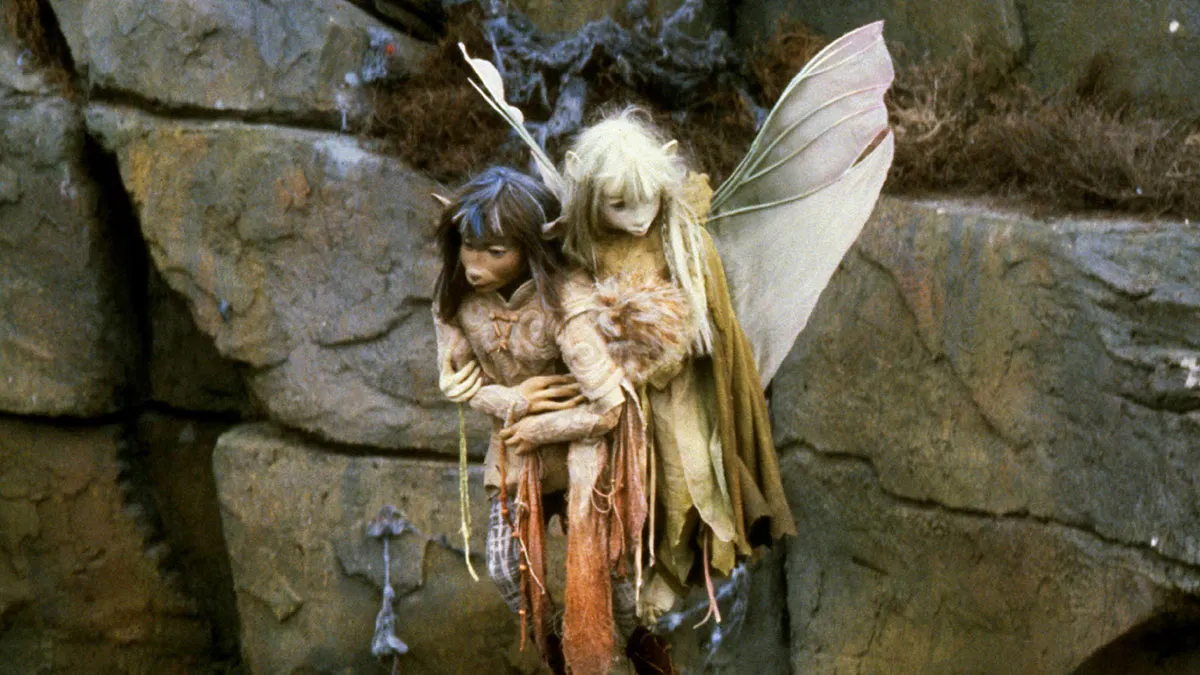
The Dark Crystal is more than another dark fantasy film from the early ’80s. It’s unique in the true sense of the word. It was the first live-action feature film without any humans on screen—and it remains one of very few. Directed by Jim Henson and Frank Oz from a story by Henson, its combination of puppetry, animatronics, and practical effects is still unrivaled (yes, including the puppet Jabba the Hutt who would appear one year later). Even small character designs like the Gelflings required at least two, and as many as four, puppeteers to achieve believable movement. The result is a story space that is luxuriantly textural and physically grounded.
Henson is ambitious and inventive in his worldbuilding: A millennium before the story begins, two new cultures appeared on the planet Thra after a Shard was broken off the Crystal of Truth—the unflinching, bureaucratic Skeksis, and the gentle, collectivist urRu. The indigenous people of Thra are the Gelflings, who are unknowingly essential to the restoration of their homeworld. Two Gelflings named Jen and Kira attempt to restore harmony to Thra by returning the Shard to the Crystal of Truth.
Originally marketed as a family film from the trusted creators of Sesame Street and The Muppet Show, The Dark Crystal was dramatic, dreamy, eerie, and at times disturbing in a way that transfixed some audiences but confused others. The critical response was polarized, but its visual style and emotional core make it an essential fantasy film.
1. Labyrinth (1986)
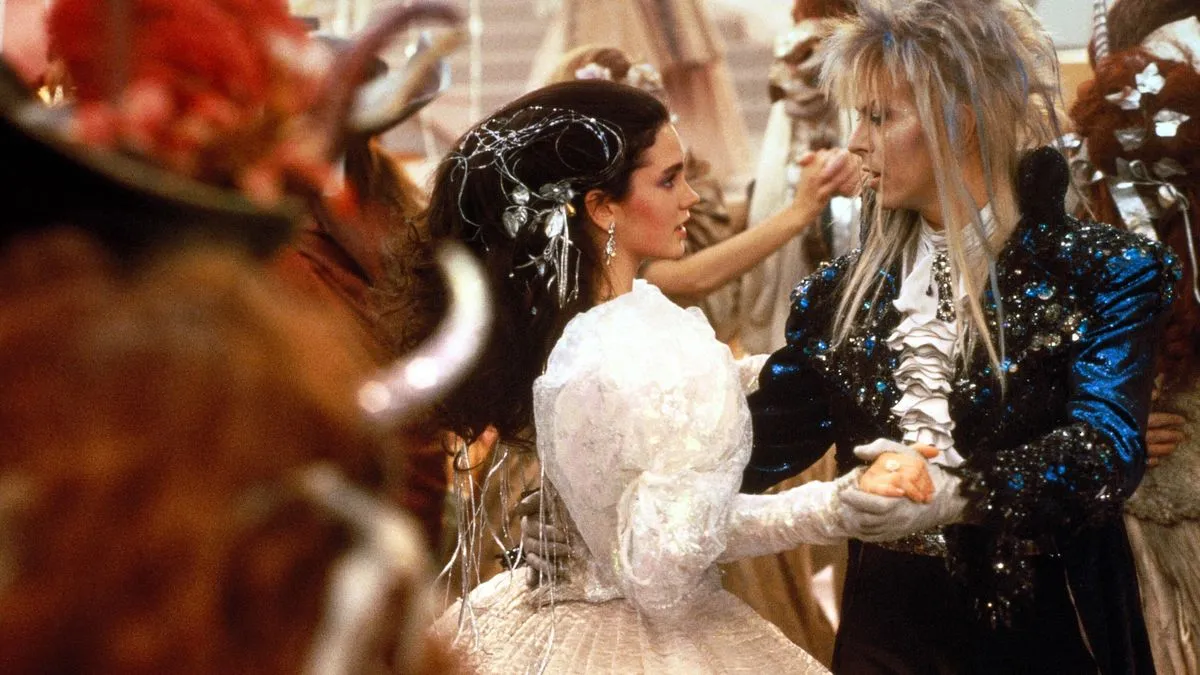
No other fantasy film from the ’80s encapsulates the joy of storytelling or the uncynical hope for a better world quite like Labyrinth. The story started as a collaboration between Jim Henson and Brian Froud, the English illustrator who created concept art and character designs for The Dark Crystal. Ultimately, it was directed by Henson and executive produced by George Lucas from a screenplay by Monty Python founder Terry Jones.
The story begins in a similar way as The NeverEnding Story and The Princess Bride: A teen girl named Sarah (Jennifer Connelly) recites passages from a book titled The Labyrinth, and as she tries to recall the last line, she remembers that she’s late to babysit her brother Toby. Frustrated by having to watch the baby, Sarah wishes for him to be taken away by the goblins in the book. The baby disappears and the film officially becomes a fantasy when the Goblin King Jareth (David Bowie) appears. Jareth gives Sarah 13 hours to navigate a labyrinth and find her baby brother before Jareth turns him into a goblin. A dungeon, a bog, a masquerade ball, puppets made in Jim Henson’s Creature Shop, and synth-driven bops by David Bowie ensue.
Released the same summer as ’80s blockbusters Top Gun and Ferris Bueller’s Day Off, Labyrinth earned less than its budget and received mixed reviews from critics who thought it was ugly in parts and violent in others. Despite the many influences openly acknowledged by Henson—The Wizard of Oz, Alice in Wonderland, and the art of Maurice Sendak— Labyrinth has since become the exemplary fantasy of its time.
(featured image: Warner Bros. / Jensen Fairley Pictures / Tri-Star / The Mary Sue)
Have a tip we should know? [email protected]
